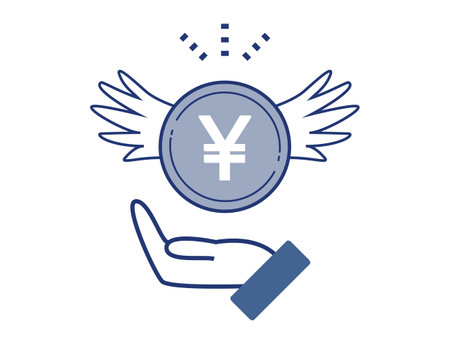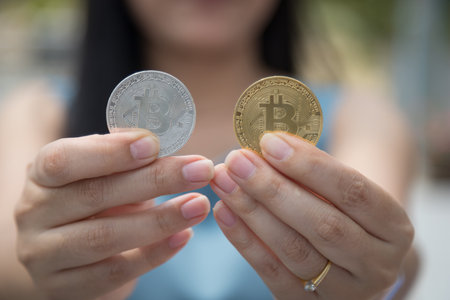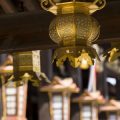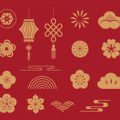1. Historical Origins of Chinese Coin Charms
Chinese coin charms have a rich and fascinating history that dates back over two thousand years. These unique objects originated during ancient dynasties, when actual currency coins began to take on symbolic meanings beyond their monetary value. Originally, Chinese coins were round with a square hole in the center, symbolizing heaven (the round shape) and earth (the square hole). Over time, these coins evolved from simple currency into powerful talismans believed to attract prosperity, ward off evil spirits, and protect families.
The Cultural Significance of Coin Charms
In traditional Chinese culture, coin charms are more than just lucky tokens. They represent harmony between heaven and earth, luck in financial matters, and protection from misfortune. Families would hang them above doors, carry them in wallets, or sew them into clothing for added security and good fortune. Their designs often include auspicious symbols such as dragons, phoenixes, or the eight trigrams from Taoist philosophy.
How Coin Charms Became Symbols of Prosperity
Over centuries, coin charms started to feature inscriptions wishing for wealth, longevity, and happiness. They became popular gifts for weddings, birthdays, and business openings, reinforcing their association with abundance and success. The use of these charms spread throughout Asia and eventually caught the attention of people in the West interested in Feng Shui and cultural symbolism.
Common Features of Traditional Chinese Coin Charms
| Feature | Symbolic Meaning |
|---|---|
| Round Shape with Square Hole | Unity of Heaven & Earth |
| Auspicious Inscriptions | Blessings for Wealth & Luck |
| Dragon or Phoenix Images | Power & Success |
| Red String Binding Coins Together | Protection & Amplified Luck |
This deep-rooted history explains why Chinese coin charms hold such significance in both traditional practices and modern adaptations—especially as they begin to influence Western ideas about financial luck and well-being.
2. Chinese Coins Enter Western Culture
Chinese coin charms, often recognized by their round shape and square hole in the center, have a long history of representing prosperity and good fortune in Chinese tradition. But how did these coins make their way into Western societies, and why are they now found in American homes and businesses?
The Arrival of Chinese Coin Charms in the West
The journey of Chinese coin charms to Western culture can be traced back to several important waves of immigration and cultural exchange. In the mid-1800s, a significant number of Chinese immigrants arrived in the United States, especially during the California Gold Rush. They brought with them not just skills and labor but also their beliefs and customs—including the use of lucky coins for financial success.
Key Moments in Cultural Exchange
| Period/Event | Impact on Coin Charm Spread |
|---|---|
| Mid-1800s Gold Rush | Chinese immigrants introduce coin charms as symbols of luck and wealth. |
| Early 1900s Chinatowns | Establishment of Chinatowns helps maintain and share cultural practices like Feng Shui and the use of lucky coins. |
| Late 20th Century New Age Movements | Western interest in Eastern spirituality leads to wider adoption of Feng Shui items, including Chinese coins. |
The Role of Early Cultural Exchanges
Cultural exchanges between East and West were not limited to immigration alone. Trade routes, world fairs, and growing curiosity about Eastern philosophies introduced more Americans to the symbolic meaning behind Chinese coins. As people learned about Feng Shui, they began to appreciate how these coins might attract wealth or protect against financial loss.
Modern Use in America
Today, it’s common to see Chinese coin charms hanging in American offices, homes, or even cars. Many people use them as keychains or display them near cash registers, hoping to invite prosperity. Their popularity has grown beyond Asian communities—now, anyone looking for a little extra luck may turn to these ancient symbols.

3. Modern Western Perceptions of Coin Charms
How Americans View and Use Chinese Coin Charms Today
In recent years, Chinese coin charms have become increasingly popular in the United States, especially as more people explore Feng Shui and Eastern traditions to improve their financial luck. However, the way Americans understand and use these charms often differs from traditional Chinese practices. Below are some common trends and beliefs about Chinese coin charms among Americans today.
Popular Beliefs About Coin Charms
Many Americans see Chinese coins as simple symbols of good fortune, wealth, and prosperity. These coins are often used as decorative items in homes or offices, sometimes without a full understanding of their original cultural meaning. Some believe that simply owning or displaying the coins can attract money and success, while others follow specific placement suggestions from Feng Shui guides found online or in books.
| Belief/Practice | Description |
|---|---|
| Attracting Wealth | Coins are placed near cash registers, wallets, or business entrances with hopes of increasing profits. |
| Gift Giving | Chinese coins are given as gifts during holidays or business openings for good luck. |
| Decorative Use | Used as ornaments on keychains, jewelry, or wall hangings mainly for their attractive design. |
| Personal Charms | Carried in wallets or purses to bring personal financial luck. |
Confusion and Misunderstandings
While many Americans are interested in using Chinese coin charms, there is often confusion about how they should be used. For example, some people may not realize that the side of the coin with four characters is traditionally meant to face outwards for luck. Others might mix up different kinds of Asian coins or symbols, assuming they all have the same meaning. This can lead to creative but non-traditional uses of coin charms in American homes and businesses.
Common Misunderstandings:
- Mistaking replica coins for ancient valuable artifacts
- Using odd numbers of coins when even numbers are considered more auspicious in traditional Feng Shui
- Mixing Chinese coins with other cultural symbols without knowing their meanings
Adaptations in Daily Life
The use of Chinese coin charms has also evolved as Americans blend these items into their own lifestyles. It’s common to see coin charms tied with red ribbons (a nod to traditional symbolism) hanging on rearview mirrors in cars, attached to keychains, or even incorporated into fashion accessories. Many people combine these coins with other lucky items like four-leaf clovers or horseshoes to create a unique mix of East-meets-West good luck charms.
Examples of Adaptation:
- Coin charms as part of modern jewelry designs (bracelets, necklaces)
- Inclusion in DIY crafts and home décor projects for a personal touch
- Phrases like “lucky money” used to describe these charms in casual conversation
This blending of cultures shows how American interpretations of Chinese coin charms continue to change and grow, making them a familiar—if sometimes misunderstood—part of Western ideas about financial luck.
4. Integration of Coin Charms in Western Financial Practices
How Chinese Coin Charms Entered U.S. Culture
Chinese coin charms, with their distinctive round shape and square hole, have become popular symbols of prosperity and good fortune beyond Asia. In the United States, these ancient coins are embraced by people from all walks of life who want to attract financial luck. Americans often discover these charms through cultural events, feng shui consultations, or as unique gifts from friends and family.
Popular Ways Businesses Use Coin Charms
Many businesses in the U.S. incorporate Chinese coin charms into their daily operations as a way to encourage positive cash flow and success. Here are some common places where you might find these lucky coins:
| Location | How Coins Are Used |
|---|---|
| Cash Registers | Coins are tied with red string and placed near or under the register to invite sales and prevent loss. |
| Office Desks | Coin charms sit on desks or inside drawers, symbolizing a steady flow of money and new business opportunities. |
| Reception Areas | A bowl of coins or coin ornaments welcomes guests, sending a message of abundance to everyone entering the space. |
| Safe Boxes | Businesses may keep a set of coins inside their safe as a protective measure for assets and profits. |
Personal Financial Planning with Coin Charms
Individuals in America also use Chinese coin charms when managing personal finances. People place coins in wallets or attach them to keychains for luck on important days, like tax filing or investment decisions. Some even give coin charms as gifts during milestones such as opening a new bank account or starting a business, hoping to share prosperity with loved ones.
Feng Shui Consultants and Modern Adaptations
With the growing popularity of feng shui in the U.S., experts often recommend specific placements for Chinese coins at home or work. For example, they might advise hanging three coins tied with red ribbon near the front door to draw wealth energy into the building. Modern interpretations also see these coins used as part of vision boards or financial goal-setting rituals, blending traditional beliefs with contemporary self-help strategies.
Cultural Sensitivity and Blending Traditions
When Americans integrate Chinese coin charms into their routines, they often do so respectfully, learning about the history and symbolism behind the practice. This cultural exchange enriches both traditions and creates new ways for people to connect with the idea of financial luck in their own lives.
5. Debunking Myths and Promoting Cultural Appreciation
Understanding Coin Charms in American Culture
Coin charms and Chinese coins are often seen as lucky objects in the U.S., especially when it comes to attracting wealth or good fortune. However, many people may not fully understand their cultural origins or the real meaning behind these symbols. Lets address some of the most common misconceptions and explore how to appreciate these coins respectfully.
Common Misconceptions About Coin Charms
| Misconception | Reality |
|---|---|
| All Chinese coins guarantee instant wealth. | No object can guarantee financial success; coins are meant to symbolize prosperity and positive energy. |
| It doesnt matter how you use or display coin charms. | The placement and intention behind using coin charms are important in traditional Feng Shui practices. |
| Using coin charms is just a superstition with no real value. | While there is no scientific proof, many people find value in their symbolism, motivation, and connection to culture. |
| Coin charms are only for those who believe in Feng Shui. | Anyone can appreciate their beauty, history, and symbolic meaning, regardless of personal beliefs. |
Respecting Cultural Origins While Embracing Positive Symbolism
- Learn About the History: Take time to research where Chinese coins come from and what they represent in Chinese culture. This helps avoid stereotypes or misunderstandings.
- Avoid Stereotyping: Don’t assume all Asian traditions are the same or treat coin charms as mere “exotic” decorations. Each symbol has its own background and significance.
- Use With Intention: Place coin charms thoughtfully in your home or office, perhaps by your workspace or entryway, to symbolize welcoming prosperity rather than expecting miracles.
- Share What You Learn: If friends ask about your coin charm, share its story and meaning instead of just calling it a “good luck charm.”
- Support Authentic Artisans: When purchasing coin charms, buy from reputable sources that respect traditional craftsmanship rather than mass-produced novelties.
The Positive Impact of Cultural Exchange
Bringing Chinese coin charms into Western spaces can be a meaningful way to celebrate diversity. By honoring their roots and sharing their stories, we help create a richer understanding between cultures—while still enjoying the hope and positivity they symbolize for our financial journeys.


